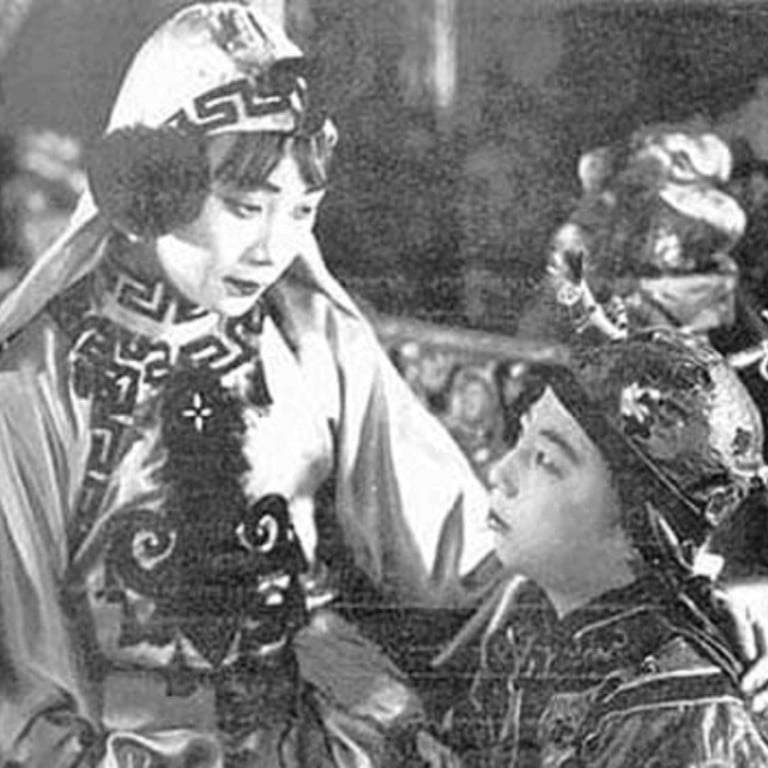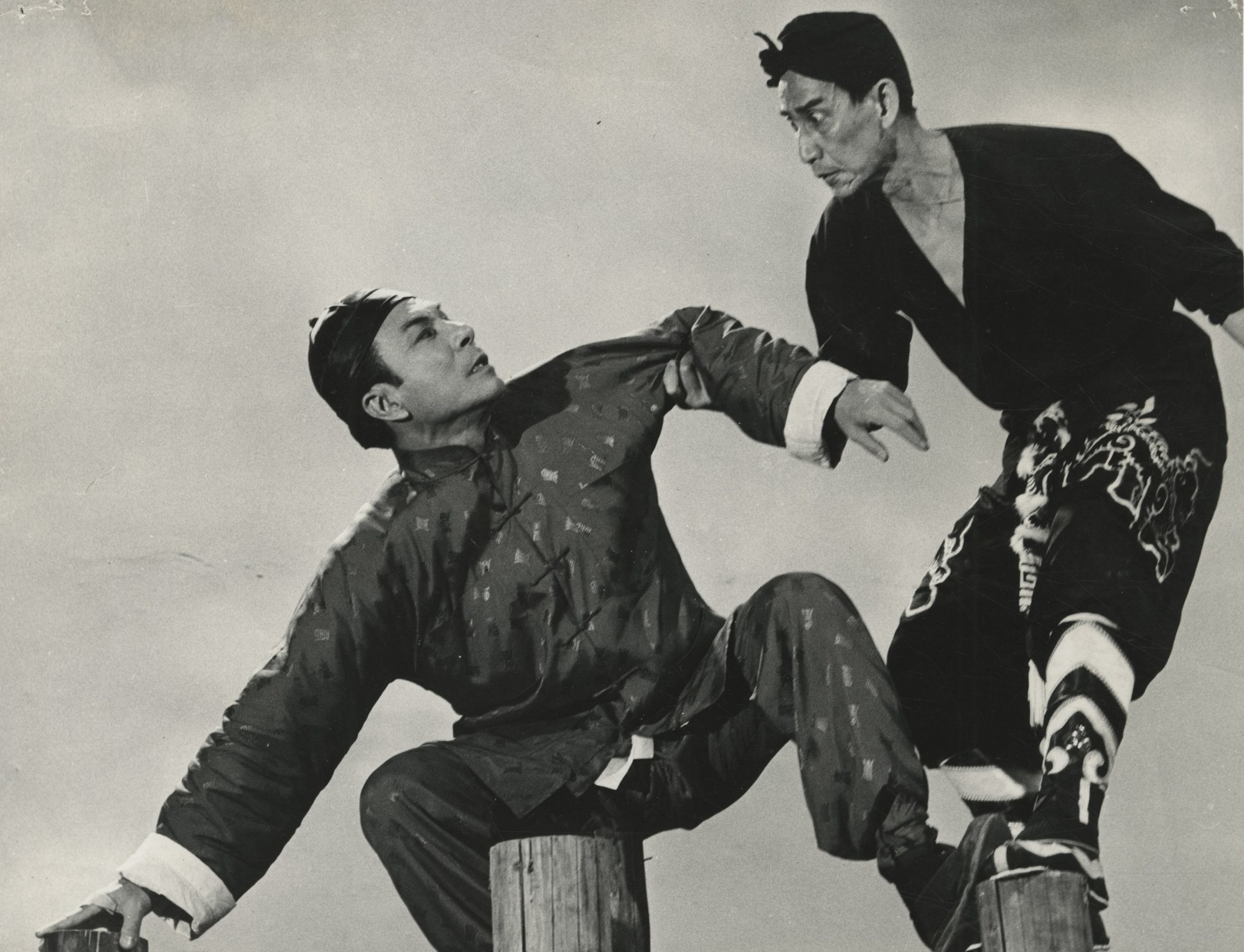
The martial arts choreographers who brought fight scenes to life in wuxia and kung fu films
- Early martial arts films were based on Beijing opera and northern styles of kung fu. Later, they were inspired by southern fighting styles
- The mid-60s saw the start of a golden age for choreographers like Lau Kar-leung and Tong Kai, who composed and directed fight scenes, and began being credited
Hong Kong martial arts films owe much of their success to martial arts choreographers. But their history is mainly undocumented.
A brief 1999 essay by the Hong Kong Film Archive’s Yu Mo-wan, called Martial Arts Directors in Hong Kong Cinema, set out the historical framework of the craft and provided some of the material for this story.
Beginnings in Shanghai
The first wuxia films were made in Shanghai, then known as “the Hollywood of the East”, in the 1920s. According to Stephen Teo’s all-encompassing book Chinese Martial Arts Cinema, 1922’s Vampire’s Prey is the earliest example of a film with wuxia characteristics, and The Burning of the Red Lotus Temple, released in Shanghai 1928 and directed by Zhang Shichuan, is generally considered to be the first of the genre as we would recognise it.

Martial arts choreographers were not generally credited in early Shanghai cinema, and they may not have been common, but Yu, in his essay, notes that Yam Yu-tin, who later worked in Hong Kong, was credited as martial arts director for a film called Red Butterfly in 1927.
Like an Asian Henry Fonda: Jimmy Wang Yu the hero in 1967 film The Assassin
Early wuxia films have not survived, and some were even destroyed by Chinese officials, who felt that their rebellious characters were a bad influence. They are said to have contained martial scenes that used the technique of wirework to give the impression of characters flying.
In early Hong Kong films, it’s often said that the actors designed the martial arts scenes for themselves. But Yu notes that Hong Kong’s first martial arts film, The Adventures of Fong Sai-yuk (1938), had a pair of martial arts directors.
“There were martial arts directors in Hong Kong cinema in 1938. The first film to have martial arts directors was The Adventures of Fong Sai-yuk. The martial arts directors were Ho Si-kit and Ng Mei-lo. Ng was a female martial artist, and both she and Ho were famous in Hong Kong.”
“The martial arts seen in [the 1940s] were mostly influenced by [Beijing] opera, following a simple formula,” Yu writes.

Wong Fei-hung and the 1950s
Cantonese-language martial arts films became popular in Hong Kong during the 1950s because of the success of the Wong Fei-hung film series. Directed by Wu Pang, and starring Kwan Tak-hing, the Wong Fei-hung films eschewed fantasy and swordplay for authentic depictions of the southern hung ga style of kung fu.
This offered new opportunities for choreography. “It all came about because Cantonese cinema wasn’t doing well at the time, particularly those featuring martial heroes like Fong Sai-yuk, with their flying swords and similar ploys,” Wu told the Film Archive. “I thought that, as northern-style kung fu films didn’t sell, why not make a real kung fu movie with Cantonese-style fist fighting?”
I experimented with a seven- by five-foot trampoline. I did a somersault, the camera followed it with a vertical pan, and the ‘weightless leap’ was born!
Yuen Siu-tin, who was born in 1912, had his roots in Cantonese opera, rather than Beijing opera. He had performed in numerous opera troupes, and also taught stagecraft and northern-style martial arts.
“There was no such job as martial arts director when I started working [at Shaw’s],” Han told the Hong Kong International Film Festival. “I was hired as the ‘snake head’ to lead a group of martial artists. It was not until Venture of the Lady Musketeer, [made for MP & GI Films in 1961], that I was formally entitled the ‘martial arts director’,” he says.

Although wirework may have been used in Shanghai, Han says that the “flying” technique was not used in Cantonese-language martial arts films until the 1960s, in films like 1964’s The Young Swordsman, Lung Kim Fei.
The origins of the use of trampolines in martial arts sequences are similarly blurry. Although many claim to have discovered the idea of using a trampoline to emulate “Zen jumping” – the short flights that the swordsman makes in martial arts films – Han says he did it first, in a film called The Swallow in 1961.
“I experimented with a seven- by five-foot trampoline. I did a somersault, the camera followed it with a vertical pan, and the ‘weightless leap’ was born!” he said.
The sword-swinging ’60s
The mid-1960s saw the start of a golden age for martial arts choreographers, and the success of Shaw Brothers’ new wave wuxia films, shot in Mandarin Chinese, brought many opportunities for them.
Choreographers gained credit for their work, became sought after, and were given the freedom to compose and even direct the combat sequences within the films. Each director demanded something new, so innovation flourished.
The first martial arts film to feature a more “modern” approach to combat was not a Shaw production – it was the 1966 wuxia adventure The Jade Bow, produced by Great Wall Movie Enterprise. The martial arts choreography, by Lau Kar-leung and Tong Kai, was unusually dynamic for the time, and caught the eye of Shaw Bros, who hired them.
The pair, whose collaboration had begun with South Dragon, North Phoenix in 1963, had a 10-year partnership, and choreographed many of Chang Cheh’s notable films, including One-Armed Swordsman, until 1974.
“Tong Kai was an expert in handling action with big crowds,” director Ling Wan told the Hong Kong Film Archive’s oral history project. “As for the man to-man combat scenes, Lau Kar-leung was much better. For this reason, the two worked well together.”
In this regular feature series on the best of Hong Kong martial arts cinema, we examine the legacy of classic films, re-evaluate the careers of its greatest stars, and revisit some of the lesser-known aspects of the beloved genre. Read our comprehensive explainer here.
Want more articles like this? Follow SCMP Film on Facebook
